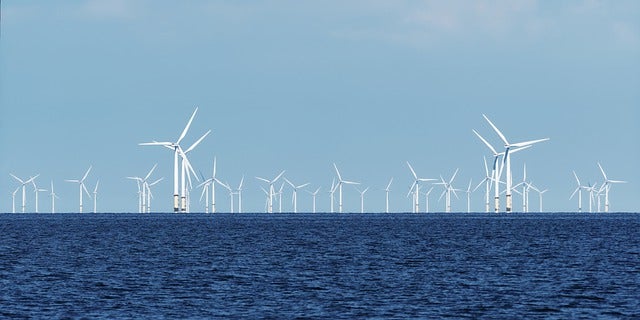
Seaway 7’s offshore experience in the energy sector spans three decades, transferring offshore operational knowledge and complex project management experience to successfully deliver more than 30 offshore wind projects.
Seaway 7 has been active in the fixed offshore wind industry since 2009, when the Group installed its first monopile foundation for offshore wind in the UK, and has since built an industry-leading track record in installing foundations, substations and inner array cables for many of the key offshore wind developers in Europe, Taiwan and the US.
The track record and secured backlog of the Group now extends to over 1,250 foundations, 30 substations and more than 3,350 kilometres of cables.
Seagreen Offshore Wind Farm
As the main contractor for Seagreen Offshore Wind Farm, Seaway 7 is responsible for
the Engineering, Procurement, Construction and Installation (EPCI) of the foundations
and inner-array cables. The project is one of the greatest logistical efforts in fixed
offshore wind to date.
Client: Seagreen Wind Energy Ltd.
Project scope: EPCI of 114 jacket foundations and approximately 300 kilometres of inner-array cables.
Location: Scotland. Over 27 kilometres from the Angus coastline at its nearest point.
Water Depth: Ranging between 40-60 metres
Worksites: The fabrication work scope for foundations is executed across multiple sites in the UAE and China. Inner-array cables were manufactured in Greece. The installation base for Seagreen foundations is at the Port of Nigg – utilised for marshalling, storage and logistics. The cable installation base is at the Port of Blyth in Northumberland, UK – utilised for cable storage and logistics.
Assets: The marine spread comprises a wide range of vessels from the Seaway 7 fleet and third-party chartered vessels: heavy transportation vessels, including Seaway Osprey, scour protection vessels, a crane vessel for foundation installation, cable-lay vessels including Seaway Aimery and Seaway Phoenix; and installation support vessels.
Date awarded: June 2020.
Completion date: Ongoing. Seagreen will be operational by early 2023.
Project at a glance
The Seagreen Offshore Wind Farm is a joint venture project between TotalEnergies (51%) and SSE Renewables (49%). On completion, Seagreen will be Scotland’s largest and the world’s deepest offshore wind farm. The project will have an installed capacity of 1,075MW, providing enough green energy to power more than 1.6 million homes, equivalent to two thirds of all Scottish homes. It will displace over 2 million tonnes of carbon dioxide from electricity generated by fossil fuels every year.
Highlights
• First of 114 jacket foundations delivered just one year on from contract signature
• First jacket superstructures arrived at the Port of Nigg in August 2021
• First jacket foundation installed in October 2021
• First-ever gigawatt-scale deployment of suction caisson technology to fix offshore wind turbine foundations to the seabed
• Seaway 7 has helped SSE Renewables to double capacity on Seagreen at a similar cost to Beatrice Offshore Wind Farm just three years earlier
• World’s tallest offshore wind foundations in the world’s deepest site, with a record 2,400 tonnes of steel for the largest units.
Technology and innovation
Seaway 7 has facilitated innovative foundation technology on the Seagreen project, as the first-ever gigawatt-scale deployment of suction caisson technology to fix offshore wind turbine foundations to the seabed. The Suction Caisson Jacket design overcomes the difficult and variable soil conditions on the project and was a key contributor to cost reduction. The deepest locations across the Seagreen site will also feature some of the world’s tallest fixed-jacket foundations in offshore wind, representing sizeable challenges in fabrication, transportation and installation, and requiring rigorous engineering and project management.






